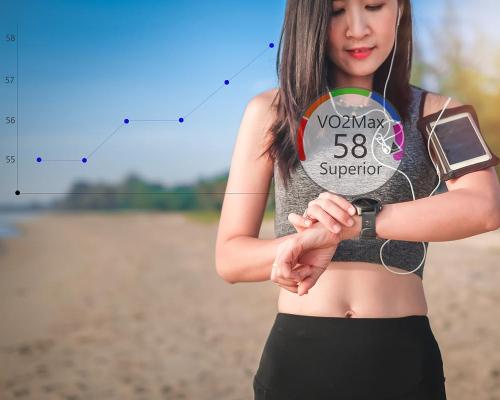02 Feb 2023
Cambridge researchers' AI model shows VO2 max lab-level results are achievable with wearables
BY Frances Marcellin

Researchers at the University of Cambridge have found a way to establish the exact VO2 max of an individual through the use of smartwatch data that is as accurate as a professional sports lab test. VO2 max refers to the maximum volume of oxygen used during exercise and is considered to be the gold standard measure of fitness and aerobic capacity.
Some smartwatches do provide users with a VO2 max figure, but it is not clear how accurate these are, especially when some brands do not share the algorithms that produce the results. It has always been essential for athletes to be properly tested in a lab or health centre setting with the correct equipment to truly understand their VO2 max status. The test involves the athlete wearing a mask and heart rate monitor which measures the oxygen inhaled and air exhaled as exercise intensity increases.
The study, which used data from 11,000 participants using wearable sensors from another research project, the Fenland Study. Seven years later the baseline data was compared with follow-up data from a subset of 2,675 participants. From the resulting data, the researchers used an AI model that could predict VO2 max, which was compared with a third subset of 181 people who undertook a traditional lab test. The results “showed a high degree of accuracy” when compared with the lab tests.
“We had to design an algorithm pipeline and appropriate models that could compress this huge amount of data and use it to make an accurate prediction,” said co-lead author Dr Dimitris Spathis from Cambridge’s department of computer science and technology. “The free-living nature of the data makes this prediction challenging because we’re trying to predict a high-level outcome (fitness) with noisy low-level data (wearable sensors).”
The research team says that all the algorithms and models are open sourced, so that everyone can use them.
“We've shown that you don't need an expensive test in a lab to get a real measurement of fitness – the wearables we use every day can be just as powerful, if they have the right algorithm behind them," said senior author professor Cecilia Mascolo from the department of computer science and technology. “Cardio fitness is such an important health marker, but until now we did not have the means to measure it at scale. These findings could have significant implications for population health policies, so we can move beyond weaker health proxies such as the Body Mass Index (BMI).”
The research was carried out by Jesus College, Cambridge, and the Engineering and Physical Sciences Research Council (EPSRC), part of UK Research and Innovation (UKRI). The results are reported in the journal Npj Digital Medicine.
Close Window